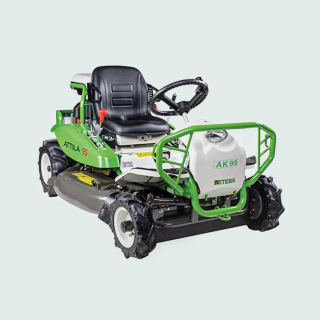In the particular rapidly evolving discipline of Artificial Cleverness (AI), efficient reference management and scalability are key to success. Virtualization, motivated by hypervisors, has emerged as a fundamental technology that will enables the adaptable and efficient use of computing assets, essential for AI development. a knockout post explores the function of hypervisors throughout virtualization, their significance in AI advancement, and the a number of00 hypervisors that strength modern computing conditions.
What is a new Hypervisor?
A hypervisor, also known while a Virtual Equipment Monitor (VMM), will be a software part that enables numerous operating systems (OS) to perform concurrently upon a single actual machine. It makes and manages electronic machines (VMs), each of which operates as an impartial system with their own OS and even applications. The hypervisor controls the equipment resources of the particular host machine, allocating them to typically the VMs as necessary, thus facilitating effective resource utilization and even isolation between different virtual environments.
The particular Role of Hypervisors in Virtualization
Virtualization refers to the creation of any electronic version of a thing, such as a server, a safe-keeping device, or possibly a network resource. Inside the framework of computing, virtualization primarily involves jogging multiple virtual machines on a one physical machine. Hypervisors will be the cornerstone associated with this process, while they enable the particular abstraction of bodily hardware into electronic resources, allowing with regard to greater flexibility, scalability, and cost-effectiveness.
Inside AI development, wherever large-scale computations in addition to data processing will be common, hypervisors perform a critical part in managing the underlying infrastructure. They permit developers to generate isolated environments intended for testing, development, in addition to deployment, ensuring that will different workloads perform not interfere using the other. This remoteness is very important throughout AI, where trials based on a models, datasets, and algorithms often require separate conditions to avoid conflicts and even ensure reproducibility.
Types of Hypervisors
Hypervisors are broadly labeled into two types: Type 1 (bare-metal) and Type two (hosted) hypervisors. Each and every type has its qualities, advantages, and make use of cases in AJE development.
Type just one Hypervisors (Bare-Metal Hypervisors)
Type 1 hypervisors run upon the particular host’s hardware, with no the need regarding an underlying working system. This type of hypervisor will be often used inside enterprise environments due to its top rated, scalability, and protection.
Examples of Variety 1 hypervisors contain:
VMware ESXi: Extensively used in information centers, VMware ESXi is known because of its robust performance plus extensive management capabilities. It’s particularly favorite in environments wherever AI workloads need dedicated resources and even high availability.
Microsof company Hyper-V: Integrated using Windows Server, Hyper-V is a well-liked choice for agencies leveraging Microsoft’s ecosystem. It’s found in numerous AI applications, specially where integration together with Windows-based tools and even services is crucial.
Xen: An open-source hypervisor, Xen is employed inside many cloud surroundings, including Amazon Net Services (AWS). Its flexibility and help for various operating systems make it a strong candidate regarding AI development in cloud-based infrastructures.
Advantages of Type just one Hypervisors:
Performance: Since they operate directly on the hardware, Type 1 hypervisors present near-native performance, which in turn is crucial regarding AI workloads that require significant computational power.
Security: The lack of an underlying working system reduces the particular attack surface, boosting security in conditions where data integrity is paramount.
Useful resource Management: Type one hypervisors excel in efficiently managing hardware resources, making certain AJE applications can range effectively.
Type two Hypervisors (Hosted Hypervisors)
Type 2 hypervisors run on leading of an current operating-system, which deals with the hardware assets. They are generally less difficult to set up in addition to use, which is why they are concidered well-liked for development in addition to testing environments instead than production.
Types of Type 2 hypervisors include:
Oracle VM VirtualBox: A cost-free and open-source hypervisor, VirtualBox is broadly used for development and testing. It is cross-platform support makes it a flexible tool for AJE developers working throughout diverse environments.
VMware Workstation: Reputed for the user-friendly interface plus powerful features, VMware Workstation is commonly used in desktop virtualization. It allows AI developers to manage multiple VMs upon their local equipment for testing and prototyping.
Parallels Desktop computer: Primarily utilized in macOS environments, Parallels Desktop computer is also suitable for AJE developers who need to be able to run Windows-based programs on their Mac pc hardware.
Advantages regarding Type 2 Hypervisors:
Ease of Work with: Type 2 hypervisors are normally easier in order to install and deal with, making them ideal for development and testing purposes.
Compatibility: They provide broad compatibility with assorted host operating methods, allowing AI developers to be effective within their particular preferred environments.
Flexibility: Type 2 hypervisors provide a adaptable solution for running different operating techniques on one machine, allowing rapid testing of AI applications around multiple platforms.
Hypervisors in AI Growth
Hypervisors are crucial for the AI growth process, providing typically the necessary infrastructure for efficient resource managing, scalability, and solitude. Here’s how hypervisors contribute to AJE development:
Resource Allowance and Optimization
AI workloads often entail heavy computations, such as training deep understanding models or running large datasets. Hypervisors allow for the particular dynamic allocation of resources like CENTRAL PROCESSING UNIT, memory, and storage space, ensuring that these workloads have the particular necessary resources with out over-provisioning. This search engine optimization reduces costs plus improves the effectiveness of AI procedures.
Environment Isolation
Inside AI development, it’s popular among experiment together with different models, frameworks, and configurations. Hypervisors enable the design of isolated environments for each research, preventing conflicts plus making certain failures in one environment do not affect other folks. This isolation is crucial for maintaining the integrity of experiments and achieving reproducible results.
Scalability
As AI projects increase, the advantages of scalable facilities becomes evident. Hypervisors support the speedy scaling of sources by allowing new VMs to be created on-demand. This particular scalability is very significant in AI, exactly where the ability to quickly scale upwards or down can easily significantly impact the speed of growth and deployment.
Expense Efficiency
Virtualization enables the consolidation involving workloads onto less physical machines, lowering the need for additional hardware. This consolidation lowers fees, at terms involving capital expenditures plus operational expenses, producing AI development even more accessible to businesses of all measurements.
Cross-Platform Development
AJE development often needs working with multiple operating systems and surroundings. Hypervisors facilitate cross-platform development by permitting different OSes in order to run about the same machine. This flexibility is usually invaluable for tests AI applications around various platforms, making sure compatibility and performance.
Upcoming of Hypervisors inside AI
As AI continues to evolve, also will the role of hypervisors. The rise of cloud computing plus edge computing is definitely likely to travel further innovation in hypervisor technology. For example, lightweight hypervisors designed for advantage devices could permit AI applications to operate closer to typically the data source, reducing latency and increasing real-time decision-making.
In addition, the integration associated with AI with virtualization technologies could business lead to smarter reference management, where AJE algorithms optimize the particular allocation of assets based on real-time demands. This synergy between AI in addition to hypervisors could more enhance the effectiveness and scalability involving AI deployments.
Conclusion
Hypervisors form typically the backbone of virtualization, providing the main system that enables the flexible, efficient, in addition to scalable deployment regarding AI applications. Regardless of whether through the high-performance capabilities of Variety 1 hypervisors or the user-friendly characteristics of Type 2 hypervisors, these technology are crucial with regard to managing the complex and demanding surroundings that AI enhancement requires.
As AJE continues to progress, the role associated with hypervisors in controlling and optimizing calculating resources will only become more crucial, ensuring that AJE developers can continue to innovate plus push the limitations of what’s feasible. Understanding hypervisors and their significance in virtualization is therefore necessary for anyone involved inside the development plus deployment of AI technologies.







Deja una respuesta